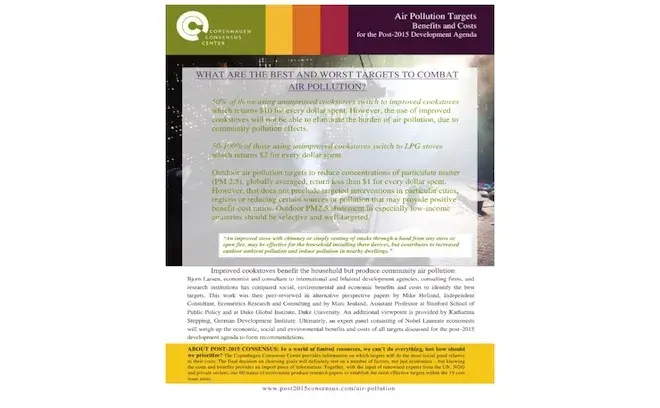Air Pollution
Air pollution is the world’s deadliest environmental problem. It kills 7 million people each year, or one in eight deaths globally. 4.3 million of these deaths are due to 2.8 billion people in the developing world who cook and keep warm inside their homes, by burning dung, firewood and coal – filling their living spaces with smoke and pollutants. Indoor air pollution from cooking and heating with open fires is equivalent to smoking two packets of cigarettes a day.
How do we best address this problem?
Providing 50% of these 2.8 billion people with improved cooking stoves – which dispels smoke outside through chimneys and vents, is one effective solution. The stoves are cheap and provide numerous benefits in terms of time, fuel and importantly health. It will save almost half a million lives each year, and avoid 2.5 billion disease days. For every dollar spent we do $10 worth of good.
However, giving people improved cookstoves is not a panacea for air pollution, even if everyone has one. Why? Because improved cook-stoves, still pollute inside (but less) and at the same time worsen the situation outside by blowing smoke into the community.
Instead, we should aim to eventually have everyone use smoke free sources such as LPG stoves or electricity. The benefits from using LPG stoves are greater, but the costs much greater, so every dollar invested does $2 worth of good.
For outdoor air pollution, the problem is even more difficult. Globally, reaching the WHO’s targets for air pollution, through low-sulphur diesel and car filters is too expensive relative to the benefit.
In the focus area of air pollution, the best target is:
- 50% of those using unimproved cookstoves switch to improved cookstoves' which returns $10 for every dollar spent. However, the use of improved cookstoves will not be able to eliminate the burden of air pollution, due to community pollution effects.
Other valuable targets in this area are:
- 50-100% of those using unimproved cookstoves switch to LPG stoves' which returns $2 for every dollar spent
Outdoor air pollution targets to reduce concentrations of particulate matter (PM 2.5), globally averaged, return less than $1 for every dollar spent.
However, that does not preclude targeted interventions in particular cities, regions or reducing certain sources or pollution that may provide positive benefit-cost ratios. Outdoor PM2.5 abatement in especially low-income countries should be selective and well-targeted.
Scroll down to read our set of reports examining air pollution targets for the post-2015 development agenda, written by leading economists and experts.
Assessment Paper
Bjorn Larsen, economic consultant, provides a comprehensive analysis of the costs and benefits of various indoor and outdoor air pollution targets. Drawing on recent scientific evidence, he proposes that inexpensive, improved biomass and coal cook-stoves can only go so far in reducing the burden of air pollution. This is because these stoves, often fitted with a chimney or vent to blow smoke outdoors, contribute to increased community air pollution. As a result not only households, but entire communities, need to upgrade to smokeless and more expensive LPG stoves to see significant benefits.
An improved stove with chimney, or simply venting of smoke through a hood from any stove or open fire, may be effective for the household installing these devices, but contributes to increased outdoor ambient pollution and indoor pollution in nearby dwellings. Only “smokeless” fuels and technologies prevent this problem of externalities."
- Bjorn Larsen
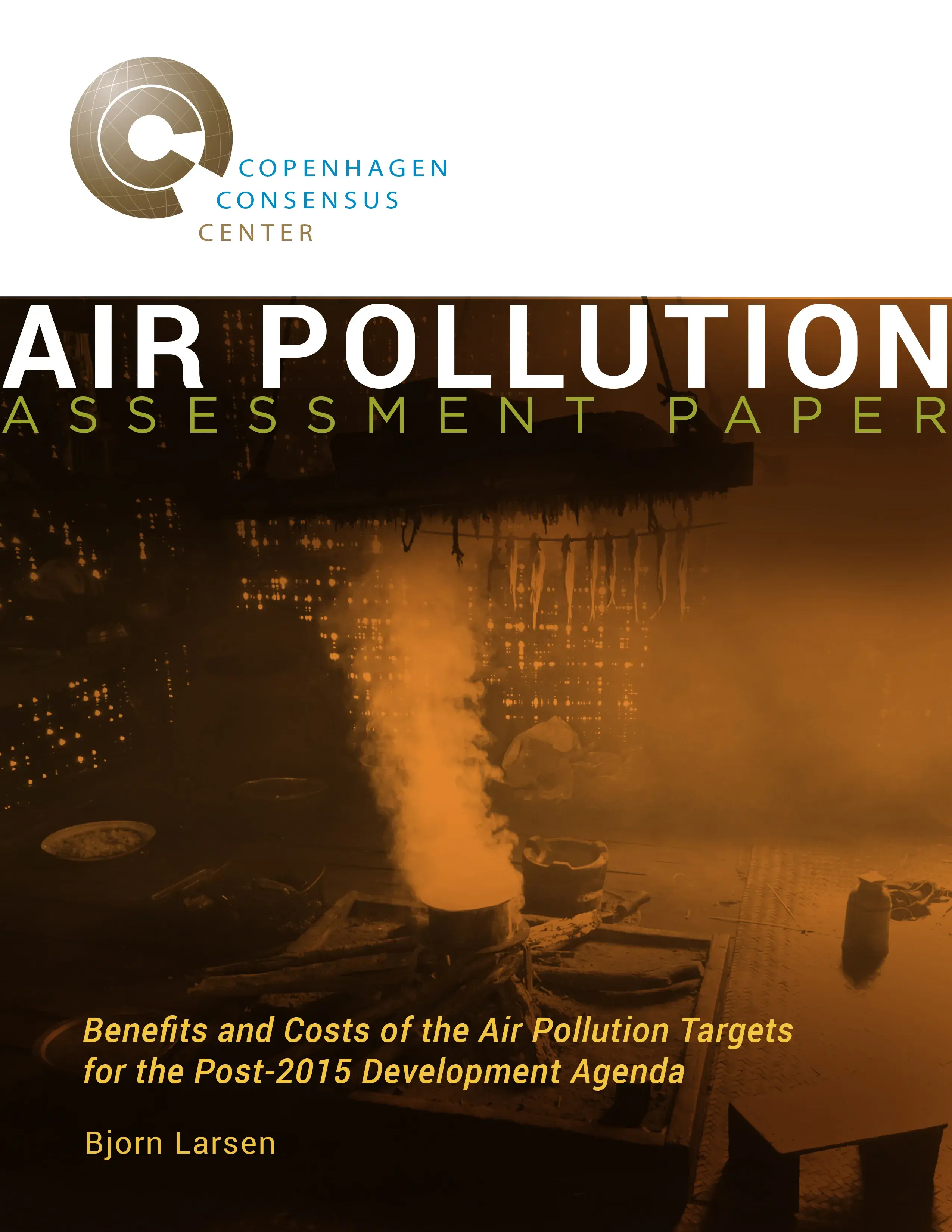
Perspective Paper
Marc Jeuland, Assistant Professor at Duke University, notes that behavioral considerations are absent from the assessment paper, and explores how this might affect interpretation of the analysis. Specifically, households may for reasons such as heating, taste or culture, prefer traditional stoves. Additionally, even if a family owns an improved stove, it may not use it all the time. This suggests that additional costs are likely to arise in the transition to clean cooking – particularly education and promotion campaigns – that must be considered when discussing the economics of indoor targets.
Existing work that better documents limited private demand for cleaner cooking technologies offers support for the idea that there is something households and individuals like about traditional stoves.”
- Marc Jeuland
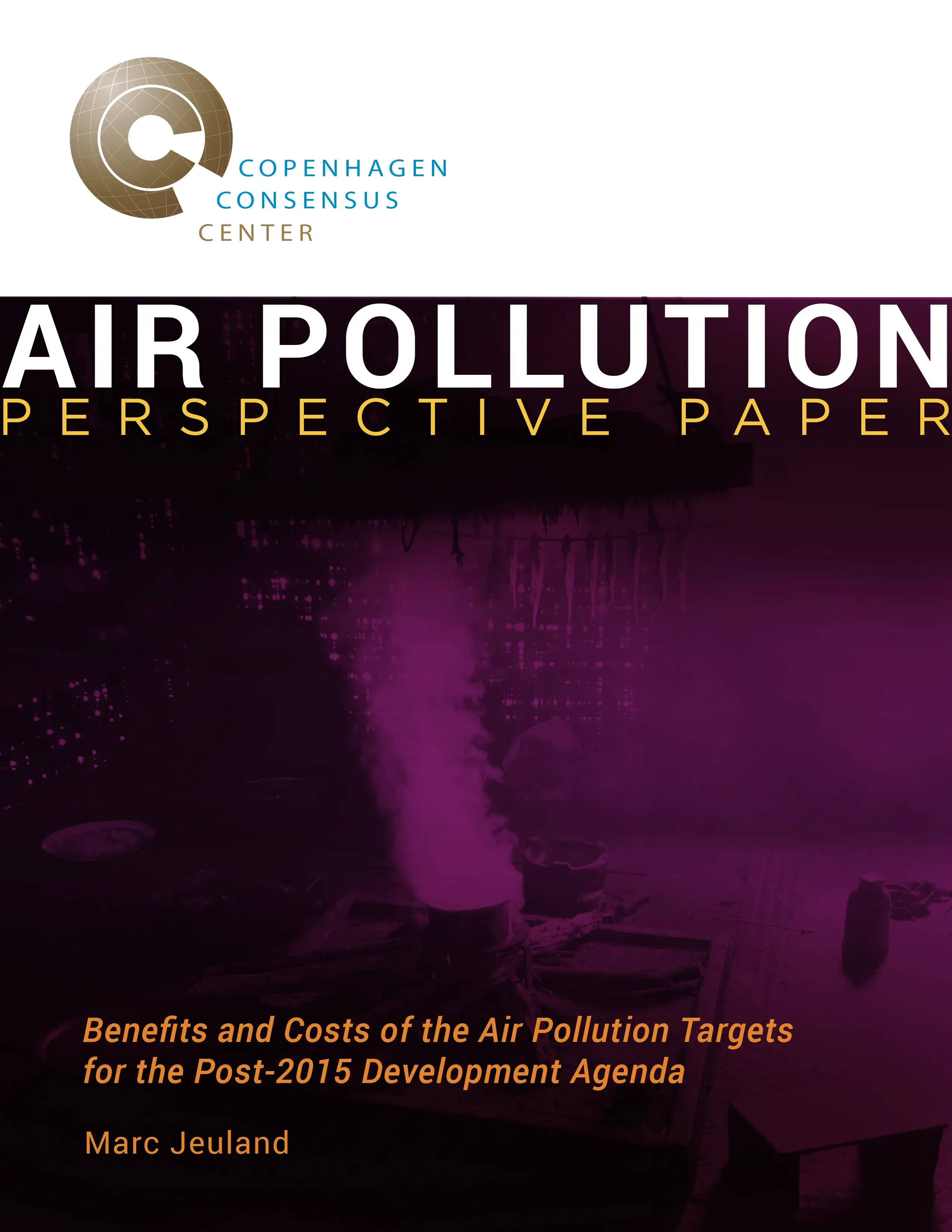
Perspective Paper
Mike Holland, independent consultant, assesses the outdoor pollution component of the assessment paper, and provides numerous additional considerations that should inform policy makers such as the gaps in our scientific understanding and the difficulty of knowing which specific pollutants to prioritize in particle reductions. In particular, he notes that there is value in greater collaboration between air pollution and climate change policy spheres, enhancing not only the harmony of policy actions but also reducing costs and expanding co-benefits.
“…a failure to link climate and air pollution policies will incur significant penalties, both in terms of cost and unnecessary impacts to health, ecosystems and the built environment.”
- Mike Holland
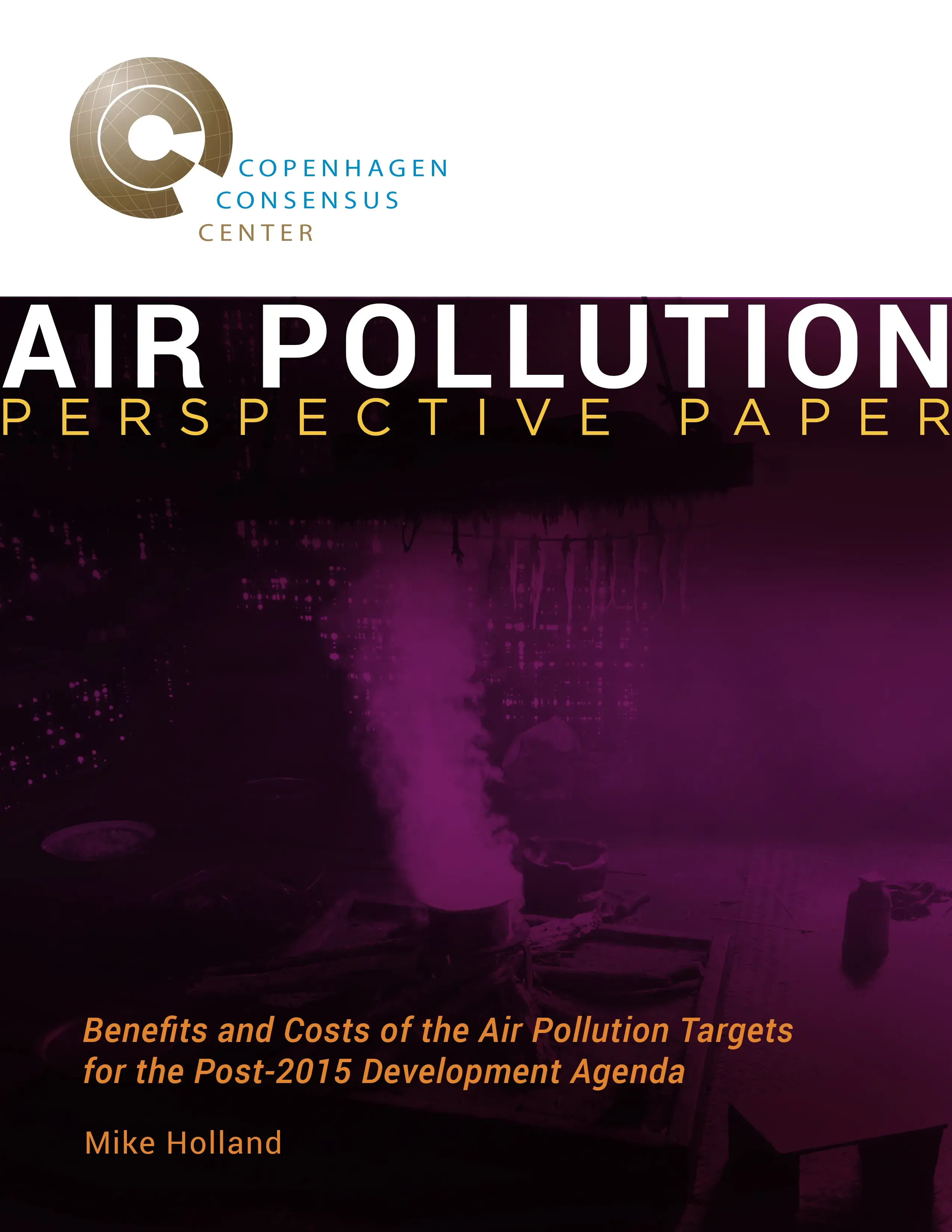
Viewpoint Paper
Katharina M. K. Stepping, Researcher at the German Development Institute commends Bjorn Larsen’s air pollution assessment paper for providing helpful and informative information in regard to the benefits and costs of pursing both indoor and outdoor pollution targets within the post-2015 development agenda. In order to compliment the research done by Larsen, Stepping discusses several additional aspects which are important to identify the smartest targets to address both types of air pollution.
Whereas developed countries should aim at achieving “zero” targets (eliminate indoor and outdoor air pollution, respectively reduce anthropogenically caused air pollution such that negative health effects are eliminated), less-developed countries should aim at achieving the interim targets established by the World Health Organization.”
– Katharina M.K. Stepping

Viewpoint Paper
The viewpoint of Clean Air Asia commends Larsen’s assessment paper and the conclusion about the importance of tackling indoor pollution, but notes that the analysis assesses only a limited set of measures to combat ambient air pollution. Moreover a simple cost-benefit analysis may not present a holistic picture.
Larsen’s paper is commendable, providing data to support the inclusion of improving air quality, specifically PM2.5 reduction, to the post-2015 development agenda.”
– Clean Air Asia
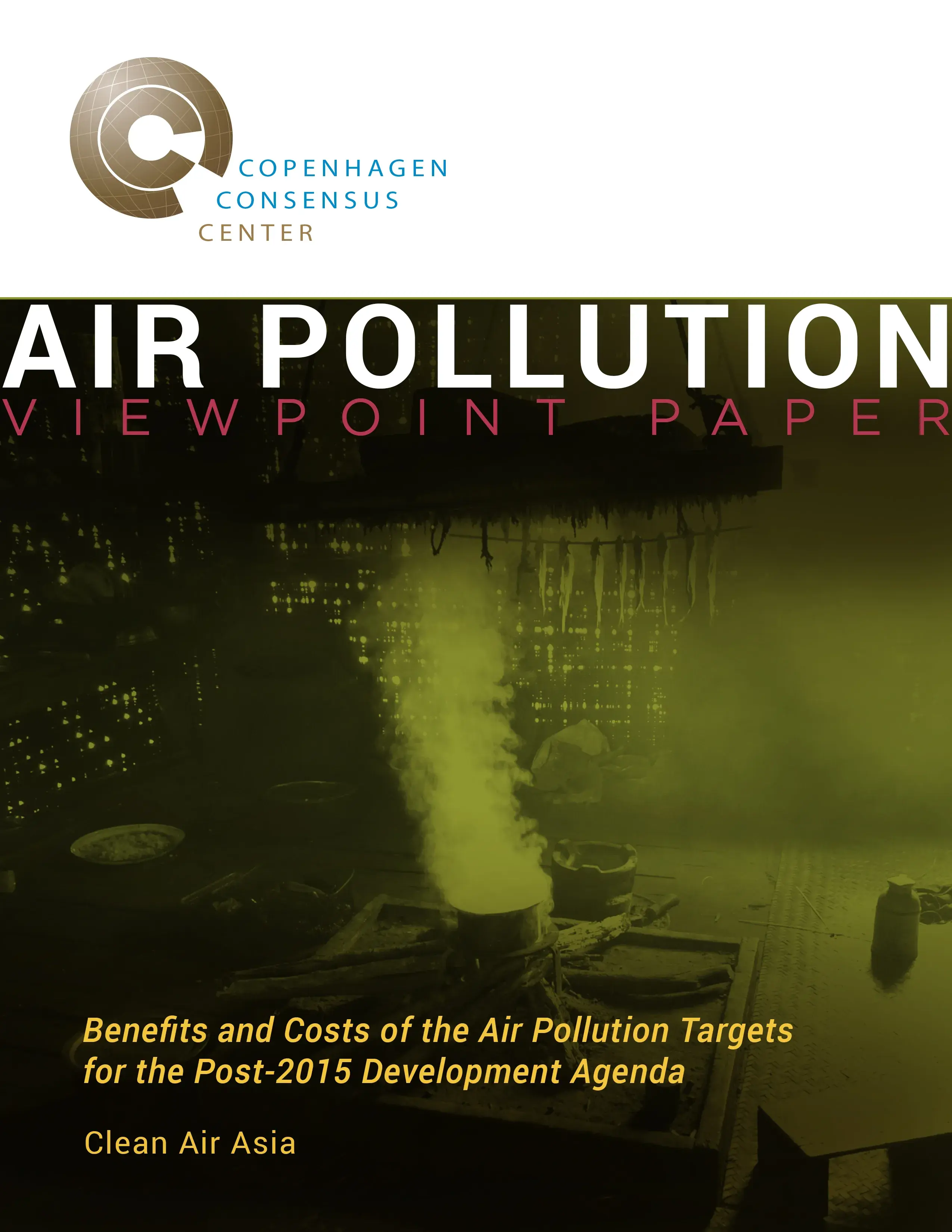
The Post-2015 Consensus project brings together 60 teams of economists with NGOs, international agencies and businesses to identify the targets with the greatest benefit-to-cost ratio for the UN's post-2015 development goals




